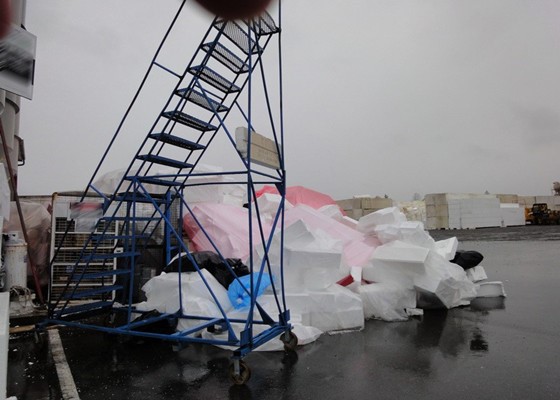Recycling with polystyrene densifier is simple and convenient - But there is no single way to recycle
German scientists have discovered a method that could revolutionize the way we dispose of rubbish by decomposing a particularly difficult kind of garbage. Researchers have found that iron-based electrocatalysis converts polystyrene foam into components that may be recycled into other processes and, as a byproduct, generates hydrogen, according to SciTechDaily.
The method breaks down the chemical structure of the polystyrene by cycling through oxidation stages with an iron-based catalyst. According to the SciTechDaily study, it converts the foam into hydrogen, which might be utilized in the drive for cleaner fuels, and benzoic acid, which is essential for the production of several fragrances and preservatives.

In recent years, there have been more and more new chemical methods for recycling polystyrene foam. Compared with them, mechanical recycling does not seem to be that complicated. In general, the overall idea of using machinery to recycle polystyrene foam is to reduce the volume of the huge polystyrene foam waste. Although it seems simple to use polystyrene recycling machines for recycling, there are many recycling methods because the polystyrene recycling machine models designed and manufactured by GREENMAX are becoming more and more abundant, and the recycling technologies involved are also becoming more and more abundant. Among them, polystyrene densifier is a very good recycling equipment that is not only simple to operate but also has a high compression ratio. The compression ratio of GREENMAX polystyrene densifier can reach 90:1.
.jpg)
One particularly difficult plastic to dispose of is polystyrene. Less than 1% of it gets recycled in the United States, and styrene, a crucial component, has been found to be potentially carcinogenic to humans. Furthermore, studies have shown that although it may take thousands of years for it to naturally decompose, it can break down into microscopic pieces that can seriously affect wildlife by getting into the food and water supplies.If you want to solve polystyrene foam pollution as quickly as possible, you must use a more mature mechanical recycling method. Recycling using a variety of efficient recycling methods is indeed a good choice. At the same time, GREENMAX does not rule out research on chemical recycling methods. In this way, the two main recycling methods can complement each other to achieve efficient recycling of white pollution.
.png)
